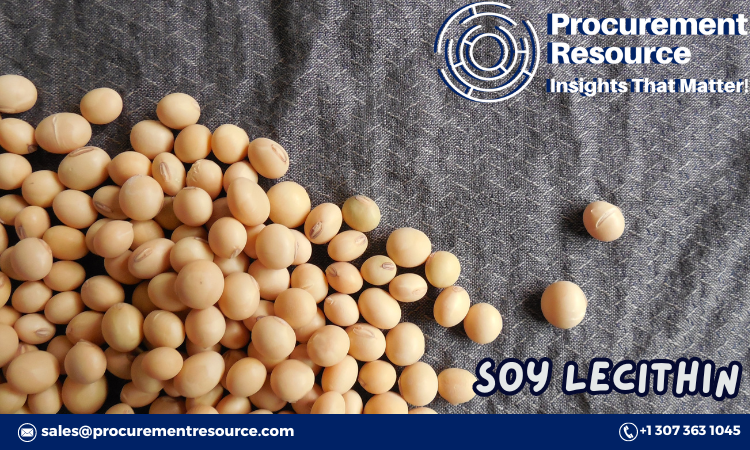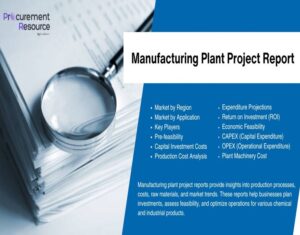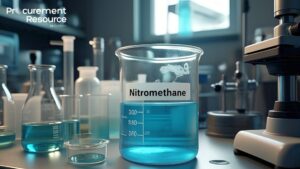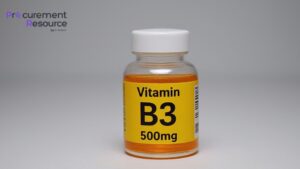
Introduction: Soy Lecithin Production Process with Cost Analysis
Soy lecithin is a versatile ingredient widely used in the food, pharmaceutical, and cosmetic industries for its emulsifying, stabilizing, and nutritional properties. Understanding the Soy Lecithin Production Process with Cost Analysis is essential for manufacturers, investors, and stakeholders looking to capitalize on the growing demand for this natural emulsifier. This report provides a thorough overview of the soy lecithin production process, raw material requirements, cost structure, and market drivers, offering valuable insights for businesses involved in the soy lecithin industry.
Request Free Sample – https://www.procurementresource.com/production-cost-report-store/soy-lecithin/request-sample
Procurement Resource Assessment: Soy Lecithin Production Process
The Procurement Resource Assessment for soy lecithin production involves evaluating the resources, technology, and expertise necessary for extracting high-quality lecithin from soybeans. Soy lecithin is typically produced as a by-product of soybean oil extraction, utilizing various processes to isolate and purify the lecithin. Key steps in the soy lecithin production process include:
- Soybean Sourcing and Testing: The process begins with sourcing high-quality soybeans, which undergo testing to ensure they meet specific quality standards. Key factors include oil content, protein levels, and absence of contaminants.
- Soybean Oil Extraction: The soybeans are cleaned and prepared for oil extraction. Commonly, mechanical pressing or solvent extraction (often with hexane) is used to separate soybean oil from the soybeans. The crude oil obtained in this step contains lecithin, which will later be isolated.
- Degumming: The crude oil is degummed to separate lecithin from the oil. Water or an acid solution is added to the oil, causing the lecithin to separate. This step produces a mixture that contains soy lecithin and other phospholipids.
- Lecithin Extraction and Purification: The lecithin is further purified and processed to remove impurities and residual solvents. Various techniques, such as centrifugation, are used to achieve the desired lecithin concentration and quality.
- Drying and Packaging: Once purified, soy lecithin is dried to remove any remaining moisture. It is then packaged for use in various industries, including food, cosmetics, and pharmaceuticals.
This procurement assessment ensures that the necessary resources, technology, and processes are in place for efficient soy lecithin production, focusing on quality control and safety standards.
Understanding Soy Lecithin
Soy lecithin is a mixture of phospholipids derived from soybeans, commonly used as an emulsifier, stabilizer, and dispersing agent. Due to its ability to blend oil and water, soy lecithin is widely employed in the food industry and serves various functional purposes across multiple sectors.
Applications of Soy Lecithin:
- Food and Beverages: Used as an emulsifier and stabilizer in products such as baked goods, chocolates, and salad dressings.
- Pharmaceuticals: Employed as an excipient in drug formulations to improve the bioavailability of active ingredients.
- Cosmetics: Soy lecithin is used in lotions, creams, and lipsticks for its moisturizing and emulsifying properties.
- Animal Feed: Due to its nutritional content, soy lecithin is also used as a supplement in animal feed to enhance digestibility and nutrient absorption.
Market Drivers
The demand for soy lecithin is influenced by various market drivers, particularly within the food, health, and cosmetic sectors. Key market drivers include:
- Growing Demand for Natural Ingredients: As consumers increasingly seek clean-label and natural ingredients, soy lecithin, derived from non-GMO soybeans, has gained popularity across industries.
- Increased Use in Plant-Based and Vegan Products: Soy lecithin’s plant-based origin aligns well with the growing trend toward plant-based diets. It is widely used in vegan and vegetarian food products as an alternative to animal-derived emulsifiers.
- Health Benefits and Nutritional Content: Soy lecithin contains essential fatty acids and choline, contributing to its popularity in health and wellness products, including dietary supplements and functional foods.
- Expansion of the Processed Food Industry: With the growth of the processed food industry, there is increasing demand for ingredients that improve texture, shelf-life, and stability. Soy lecithin’s multifunctional properties support its extensive use in this sector.
- Rising Interest in Non-GMO and Organic Products: As consumers become more health-conscious, demand for non-GMO and organic soy lecithin has grown, prompting manufacturers to expand their offerings to cater to these preferences.
Raw Materials Requirements
The raw materials required for soy lecithin production primarily include soybeans and additional inputs necessary for the oil extraction and degumming processes. Key raw materials are:
- Soybeans: High-quality soybeans are the primary raw material, and sourcing depends on the desired end-product (e.g., non-GMO or organic soy lecithin). The quality of soybeans impacts the lecithin yield and purity.
- Solvents: In solvent extraction methods, hexane is commonly used to extract oil from soybeans. The solvents must be thoroughly removed to ensure the safety and quality of the lecithin.
- Water or Acid Solutions: These solutions are used in the degumming step to separate lecithin from the soybean oil. Depending on the process, water or food-grade acids may be required.
- Filtration and Purification Agents: Certain agents or technologies are used to remove impurities and enhance the purity of lecithin during the purification stage.
By sourcing high-quality soybeans and managing additional inputs efficiently, producers can ensure the production of soy lecithin that meets industry standards for purity and effectiveness.
Costs and Key Process Information
The cost structure of soy lecithin production includes various components that influence overall production expenses and determine final product pricing. Key cost factors include:
- Raw Material Costs: The price of soybeans significantly affects production costs. Factors such as weather conditions, soybean supply, and market demand impact the cost of soy lecithin production.
- Labor Costs: Skilled labor is needed to operate extraction and purification equipment, monitor quality control, and manage packaging. Labor costs can vary by region and impact the overall cost structure.
- Energy and Utility Costs: Soy lecithin production, especially during the extraction and drying stages, requires substantial energy. Managing energy consumption is essential for cost control, particularly in large-scale production.
- Solvent Recovery and Waste Management: Solvents used during extraction must be carefully managed and recovered to minimize waste and reduce environmental impact. Waste management systems are necessary to handle residuals and by-products from the extraction process.
- Packaging and Distribution Costs: Proper packaging materials are necessary to preserve soy lecithin quality and extend shelf-life. Packaging and transportation logistics add to production costs, particularly for products intended for international markets.
By optimizing these cost factors and implementing efficient production techniques, companies can reduce operational expenses and improve profitability in soy lecithin production.
Looking for an Exhaustive and Personalized Report That Could Significantly Substantiate Your Business?
For producers, investors, and other stakeholders, a comprehensive and tailored report on soy lecithin production offers invaluable insights for strategic decision-making. Here’s what a customized report provides:
- Detailed Cost Analysis: Access a breakdown of production costs based on raw material prices, labor rates, and operational expenses to support budgeting and pricing strategies.
- Market Trends and Forecasting: Stay informed on market trends, consumer demand projections, and emerging applications for soy lecithin in various industries, including food, pharmaceuticals, and cosmetics.
- Production Optimization Recommendations: Gain insights on reducing production costs, maximizing yield, and improving energy efficiency to enhance operational performance.
- Competitive Landscape Analysis: Understand the competitive environment, including key players in the soy lecithin market, industry trends, and potential growth areas.
A personalized report equips businesses with the knowledge needed to make informed decisions, optimize costs, and capitalize on growth opportunities in the expanding soy lecithin market.
About Us:
Procurement Resource is an invaluable partner for businesses seeking comprehensive market research and strategic insights across a spectrum of industries. With a repository of over 500 chemicals, commodities, and utilities, updated regularly, they offer a cost-effective solution for diverse procurement needs. Their team of seasoned analysts conducts thorough research, delivering clients with up-to-date market reports, cost models, price analysis, and category insights.
By tracking prices and production costs across various goods and commodities, Procurement Resource ensures clients receive the latest and most reliable data. Collaborating with procurement teams across industries, they provide real-time facts and pioneering practices to streamline procurement processes and enable informed decision-making. Procurement Resource empowers clients to navigate complex supply chains, understand industry trends, and develop strategies for sustainable growth.
Contact Us:
Company Name: Procurement Resource
Contact Person: Amanda Williams
Email: sales@procurementresource.com
Toll-Free Number: USA Canada – Phone no: +1 307 363 1045 | UK – Phone no: +44 7537 132103 | Asia-Pacific (APAC) – Phone no: +91 1203185500
Address: 30 North Gould Street, Sheridan, WY 82801, USA






